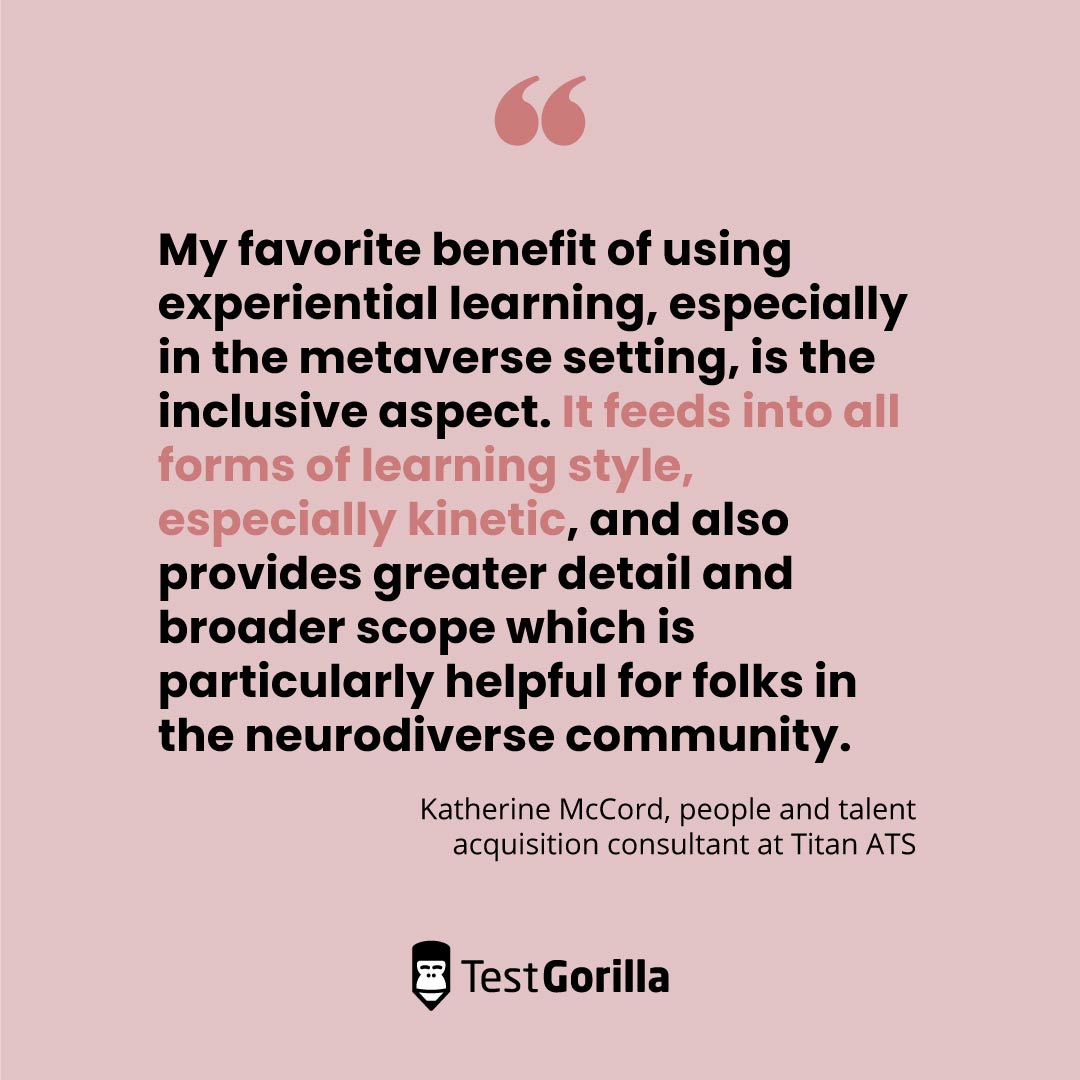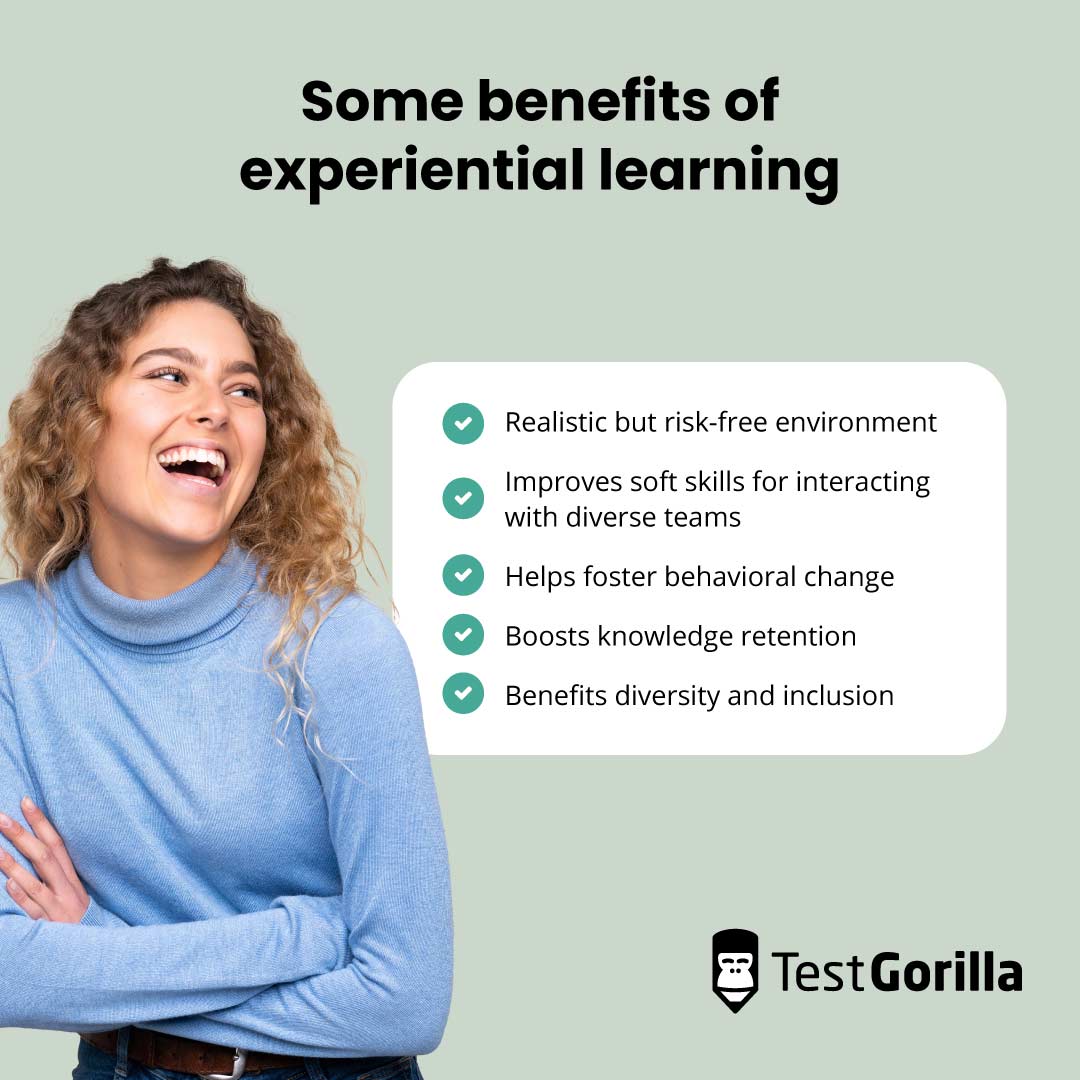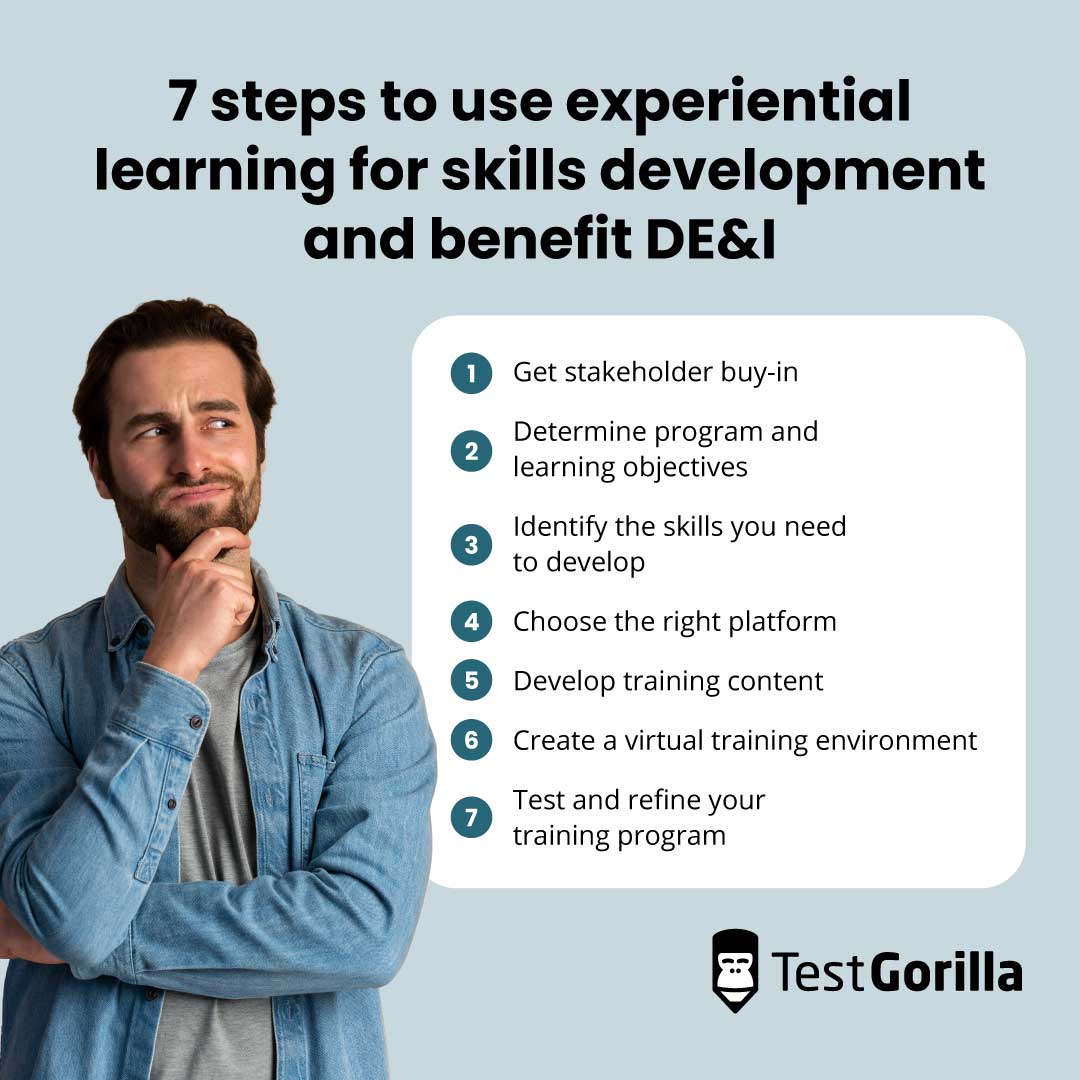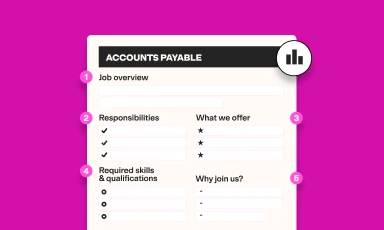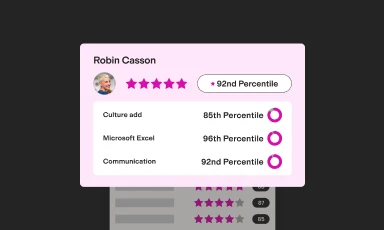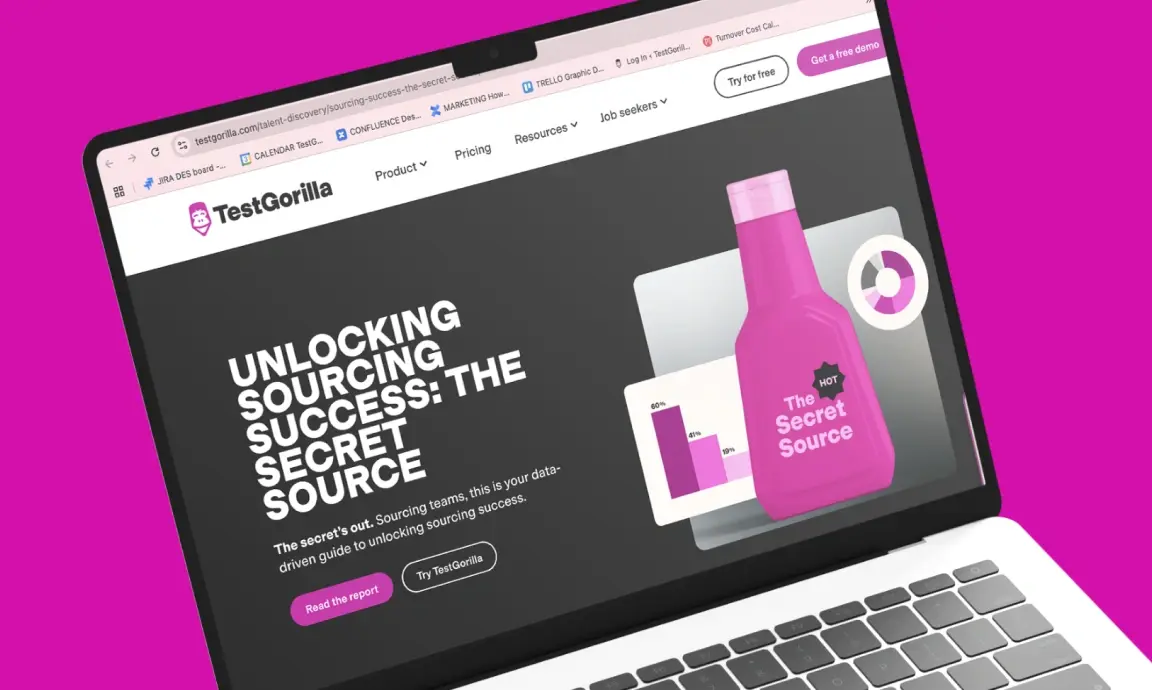How to use experiential learning for skills development
Unless you were asleep for the majority of 2016, you couldn’t have missed the global Pokémon GO phenomenon. The launch of this augmented reality (AR) game captivated millions of players and reshaped the way they engaged with their surroundings.
The legendary game uses AR to encourage players to explore and learn about their physical environment while catching virtual Pokémon creatures.
Experiential learning like this has the potential to boost knowledge retention by up to 75%.[1] Immersive learning technologies like virtual reality (VR), AR, and 360-degree video allow learners to experience real-world scenarios in a safe, simulated environment and develop new and existing skills and behaviors.
For example, experiential learning allows employees and leaders to practice the soft skills they need to deal with a variety of workplace situations and employee profiles.
Crucially, simulated environments offer a risk-free environment to navigate real-world scenarios and challenges. This can help foster behavioral change and encourage empathy with others, which has huge implications for diversity, equity, and inclusion (DE&I).
In this article, we'll look at the applications of experiential learning for continuous skills development and training, and the benefits for DE&I in the workplace. We’ll also outline how to use talent assessments to evaluate skills development and progression, and share relevant examples of trail-blazing companies that are using this technology for training.
What is experiential learning?
Experiential learning is based on the idea that people learn best when they actively participate in activities, rather than passively absorbing information through traditional means like lectures or textbooks.
In a monumental PWC study, researchers found that VR-based learners are 40% more confident in applying their knowledge and skills than those using traditional learning methods.[2]
Experiential learning usually relies on VR, AR, and computer-based simulation technologies. These immerse learners in simulated environments or overlay digital information onto the real world to blend the digital and physical worlds.
It's an approach that emphasizes learning through direct experience, reflection, and active engagement with real-world situations and environments.
These technologies let you interact with complex systems, explore historical settings, or practice skills in a safe and controlled virtual space. For instance, medical students can use VR to simulate surgeries, while employees practicing their communication skills can engage in virtual conversations or debates.
It's worth noting most of the tech involved isn't widespread or cheap, so not all companies or employees will be able to access it. However, you can use smartphones to access some learning resources on the go, engage with interactive content, and participate in location-based learning experiences.
What are the benefits of experiential learning?
Immersive and experiential learning offers a wide range of benefits that contribute to a deeper, more holistic understanding of skills and concepts. In fact, people using VR for experiential learning are four times more focused and emotionally connected to their work.[2]
"My favorite benefit of using experiential learning, especially in the metaverse setting, is the inclusive aspect," says Katherine McCord, people and talent acquisition consultant at Titan ATS. "It feeds into all forms of learning style, especially kinetic, and also provides greater detail and broader scope which is particularly helpful for folks in the neurodiverse community. It also creates stronger behavioral habits, and that's how we grow confidence, efficiency, and productivity."
Here are some other benefits of experiential learning:
Realistic but risk-free environment. With experiential learning, learners can try, fail, analyze, and try again multiple times. This can promote deeper understanding and skill development because people are more likely to step out of their comfort zones and explore new ideas, concepts, and skills in a simulated environment, especially knowing any mistakes won't have serious repercussions.
Improves soft skills for interacting with diverse teams. Research by McKinsey affirms that certain soft skills like empathy, leadership, and adaptability are in high demand across the board.[3] From conflict management and effective communication to coaching and giving feedback, experiential learning lets people practice these in a safe, simulated environment without the pressure of real-world consequences.
Helps foster behavioral change. By engaging in simulations or scenarios, learners can experience the potential positive or negative consequences of their actions in a controlled environment. This can lead to a better understanding of the impact of their behavior. They can also observe and learn from real-world examples and role models, making training more relatable and achievable.
Boosts knowledge retention. Learning through direct experience and active engagement can help to cement concepts in memory more effectively than passive learning methods.
Benefits diversity and inclusion. By experiencing someone else's lived reality and everyday situations, experiential learning can promote understanding and empathy. For example, employees can experience sexism, racism, or microaggressions through the eyes of the victim, leading to greater empathy, awareness, and behavioral change. This can make it easier to build a diverse team that’s inclusive of multiple perspectives, beliefs, and cultures.
Case study: Experiential learning for skills development – Peugeot VR training
PSA Group, maker of the Peugeot brand, uses VR for experiential learning to teach employees the skills needed to make their days safe, healthy, and productive. The training starts with a session led by a physiotherapist, during which employees learn techniques for effective stretching and the right posture for working from home.
The training also incorporates voice interaction, and instructional materials include visual aids and textual guidance. The program also addresses soft skills and provides training to improve workplace communication. It does this by simulating office environments to foster organic interactions between coworkers.
The best insights on HR and recruitment, delivered to your inbox.
Biweekly updates. No spam. Unsubscribe any time.
7 steps to use experiential learning for skills development
According to Katherine: "Many people learn through kinetic or participatory methods, so experiential learning is paramount in any training program. It works beautifully for teaching technologies, processes, and behaviorally-based skills in the workplace."
Here's how you can use this approach to improve your people's skills development, particularly the soft skills necessary for fostering DE&I.
1. Get stakeholder buy-in
Experiential learning tech doesn’t tend to come cheap, so you need stakeholder buy-in to incorporate it into your learning and development (L&D) initiatives.
To get top-down support, it's crucial to understand stakeholder priorities, challenges, and goals related to skills development and employee performance.
If you're already using the metaverse for hiring, then you can use your talent assessment software to show stakeholders the existing skills gaps in your workforce. This can help to convey the need to invest in effective learning and development tools to boost DE&I or reskill and upskill your current workforce, which can help you save on employee turnover and recruitment costs.
Other things you can do to get stakeholder buy-in include:
Gather data and research. Use your research to demonstrate the effectiveness of experiential learning in improving skills, employee engagement, and organizational outcomes.
Calculate and present potential return on investment (ROI). This might include how experiential learning can lead to increased employee performance, improved DE&I training programs, and a more positive and resilient company culture.
Propose starting with a pilot program. This can help demonstrate the effectiveness of experiential learning on a smaller scale.
2. Determine program and learning objectives
When building an experiential learning program, first consider the roles, skill levels, responsibilities, and specific needs of the group of employees who will participate. This will help you understand what type of training and learning objectives you need to reach your goals.
"Experiential learning using the metaverse is especially fantastic for interactive skill learning for remote teams," Katherine says. "This is because it provides a more detailed learning experience as opposed to phone or Zoom work alone."
Therefore, if you're working on a remote team, your experiential learning program objectives might be centered on creating team-building scenarios to improve collaboration. Remember: Each learning objective should directly correspond to the content and activities planned in the training program and enable learners to actually achieve their goals.
3. Identify the skills you need to develop
In addition to learning objectives, it's vital to know which skills you need to develop to shape your experiential training. You can use surveys, feedback from managers, and performance data to identify specific skills gaps and needs. Then, conduct industry research to pinpoint in-demand skills needed for the future health of your business and employees.
For a more accurate understanding of your current skills and skills gaps, you can also use talent assessments which help you hire and promote based on skills rather than outdated resumes, qualifications, or experience. Talent assessments are a bias-free way to assess candidate and employee skills, measure progress in skills development, and identify skills gaps.
"It's very easy to hone in on areas for skill improvement by asking yourself these questions: Where am I least efficient? Where do I make the most mistakes? On what subject am I the greatest expert? People often make the mistake of only growing skills in weak areas, but in order to truly be masters or experts in our strengths, we must perpetually grow in those areas too."
Katherine McCord, people and talent acquisition consultant at Titan ATS.
4. Choose the right platform
Given the variety of experiential learning platforms and tech available, you should first determine the types of activities and experiences that would best serve your learners' needs. For instance, you might consider simulations, virtual scenarios, hands-on tasks, or collaborative projects.
Then, assess the features and functionalities of potential platforms against those needs. Tools to choose from could include a learning management system, VR platform, or simulation software.
Be sure to also consider factors like ease of use, accessibility, interactivity, multimedia support, collaboration features, assessment capabilities, and integration with your other L&D and reporting systems. You might also want to look at things like content customization, scalability, tech and customer support, and ease of assessing learner progress.
"In a virtual training environment, you want to look for these things: engagement, flexibility, personalization, and built-in accommodations like captions and transcribing," Katherine says.
Resources allowing, you might opt to create an experiential learning platform from scratch to cater to your specific needs and industry. However, you can also use existing experiential learning platforms and tech. For example:
Murision offers VR to create immersive simulations for soft skills training, such as communication, leadership, and conflict resolution.
Axonify offers microlearning modules and gamified experiences to improve employee knowledge, skills, and behaviors in a workplace setting.
5. Develop training content
By determining your learning objectives and skills, you can specify what learners should be able to do after completing the program. Now, it's important to specify the desired behaviors, attitudes, and outcomes for each learned skill.
Once you know your desired outcomes, you can create scenarios that mirror real-world situations where learners need to apply the target soft skills. Scenarios should be relatable and meaningful to the learners' roles. For example, if you’re training leaders in managing diverse teams, you may want to create simulations to cover mentoring to nurture diversity or dealing with complaints about hair bias, among many others.
Depending on the platform and experiential tech you choose, you can then begin to develop and upload multimedia content such as videos, animations, and infographics. You can also play around with integrating activities like role-playing, case studies, simulations, and group discussions.
Also, be sure to add gamified elements like challenges, quizzes, points, and rewards where you can to enhance motivation and encourage active participation.
💡 Using the metaverse for skills training: food for thought for leaders: Ask aspiring leaders to participate in a simulation where they take on leadership roles in a mock business scenario, making strategic decisions and managing a diverse team. This way, participants can experience the complexities of leadership in a risk-free environment, and work on developing decision-making skills, adaptability, and empathy.
6. Create a virtual training environment
Part of creating a strong virtual training environment is offering tools training and support to your team. Everyone needs to know how to use the tools and tech and get the most out of them for their professional skills development.
This means clearly explaining how the virtual environment works, how to navigate it, and what tasks learners are expected to complete. Provide instructions and guidelines to ensure a smooth experience, as well as training in features of the tools you chose.
You also want to make sure to:
Thoroughly test the virtual training environment. This helps to identify any technical glitches, usability issues, or content gaps.
Allow learners to progress at their own pace. Offer options to revisit sections, skip ahead, and review content.
Provide support. Offer technical support for learners encountering issues within the virtual environment and provide contact information or help center details.
Implement feedback mechanisms. These provide learners with immediate responses to their actions, helping them understand the consequences of their decisions.
7. Test and refine your training program
To keep your training program relevant and engaging, you'll need to revisit and continually evaluate whether it's achieving its learning objectives. One way of doing this is to determine if participants can demonstrate the desired skills or knowledge after completing the program.
Using talent assessments, you can check whether employees now have the desired knowledge and applied skills. If not, you’ll be able to see where they need more training to achieve your L&D objectives.
You can also ask employees for feedback on the training program and use their insights to identify successful aspects and areas for improvement. Then, refine your training content, activities, materials, and learning environment. This could involve clarifying instructions, adding more examples, or adjusting difficulty levels.
Experiential learning: a new world of skills development
Experiential learning using VR, AR, and computer-based simulation technologies offers a dynamic, immersive, and risk-free environment where employees can safely engage with content and practice skills and scenarios.
Through realistic simulations, interactive experiences, and collaborative interactions, individuals can develop a wide range of hard and soft skills that benefit themselves and your organization.
With a focus on soft skills, experiential learning also helps improve DE&I efforts and effectiveness by letting employees almost literally walk a mile in someone else’s shoes. Gaining a deeper understanding of different cultures, backgrounds, viewpoints, and lived experiences like this can help break down biases and cultivate empathy and inclusivity.
To use experiential learning for skills training, you’ll need to get stakeholder buy-in, identify the skills you need to develop, choose your tools, create a virtual training environment, and train people to navigate it.
Complement your virtual L&D efforts by using talent assessments to identify skills gaps for development. These provide a data-based, unbiased assessment of what your people need to know and how far they’ve come.
Want a more effective way to measure employee skills? Skills-based hiring lets you measure skills and pinpoint gaps – so you know what to focus on. Download the 2024 State of Skills-Based Hiring report to learn more |
Sources:
"Accenture extended reality (XR): Immersive learning for the future workforce report." (2018). Accenture. Retrieved August 28, 2023. https://www.accenture.com/_acnmedia/pdf-86/accenture-extended-reality-immersive-training.pdf
"The Effectiveness of Virtual Reality Soft Skills Training in the Enterprise." (2020). PWC. Retrieved August 29, 2023. https://www.pwc.com/us/en/services/consulting/technology/emerging-technology/assets/pwc-understanding-the-effectiveness-of-soft-skills-training-in-the-enterprise-a-study.pdf
"Building workforce skills at scale to thrive during—and after—the COVID-19 crisis." (2021). McKinsey & Company. Retrieved August 29, 2023. https://www.mckinsey.com/capabilities/people-and-organizational-performance/our-insights/building-workforce-skills-at-scale-to-thrive-during-and-after-the-covid-19-crisis
Related posts
You've scrolled this far
Why not try TestGorilla for free, and see what happens when you put skills first.


